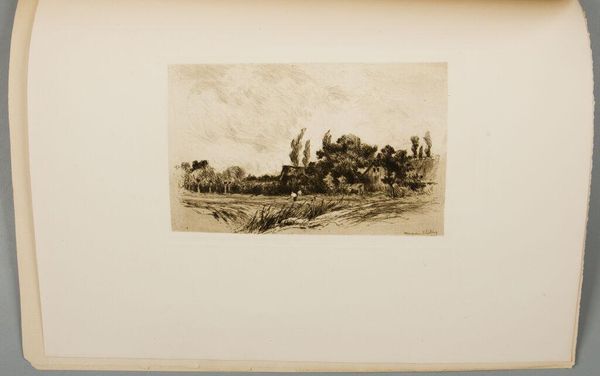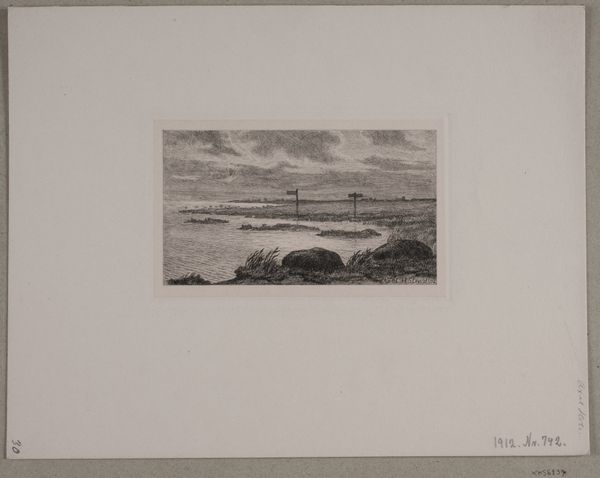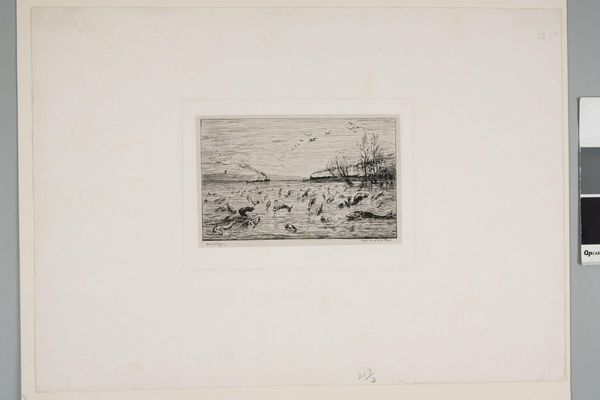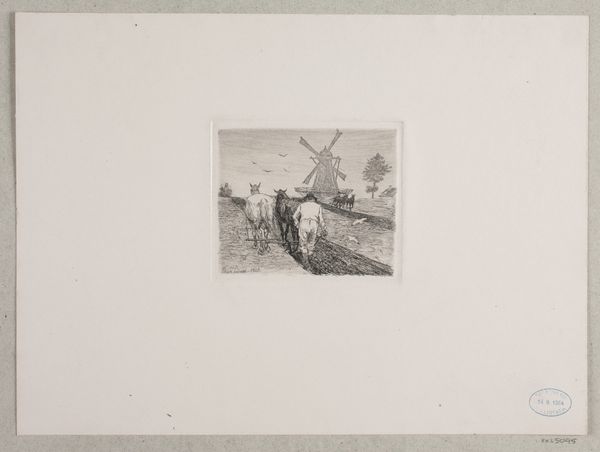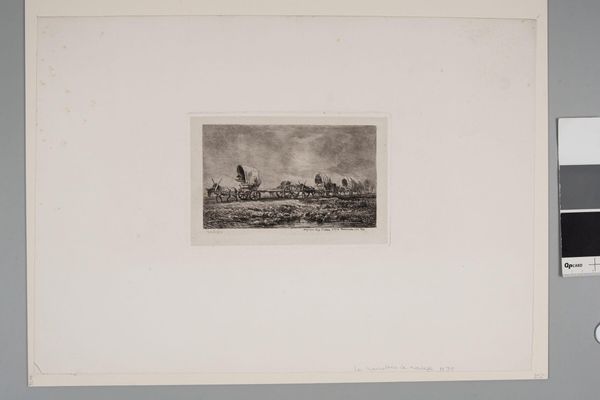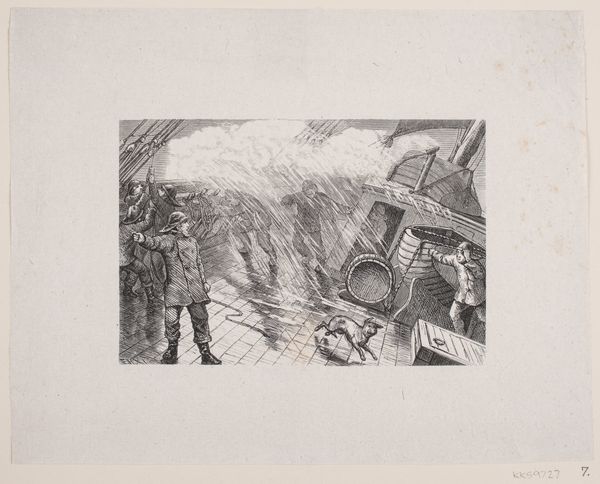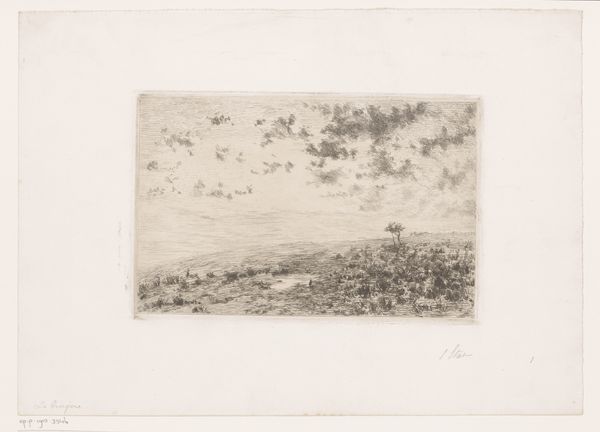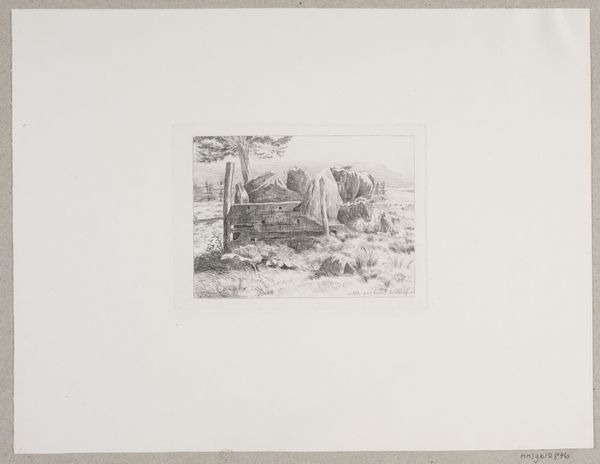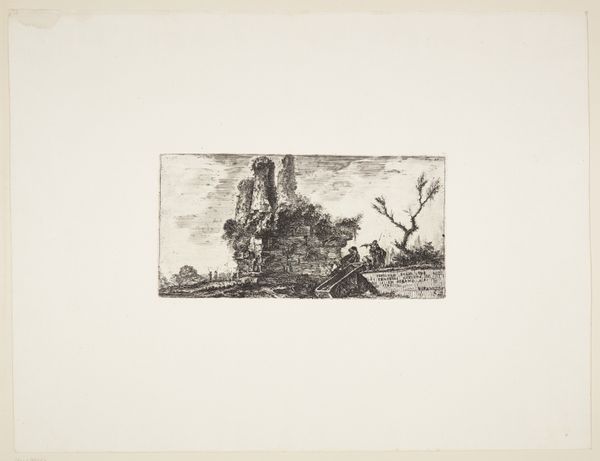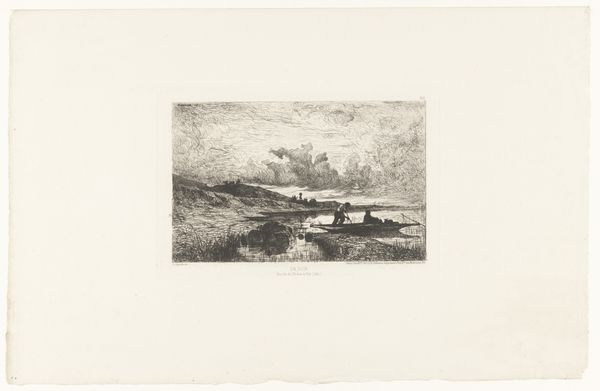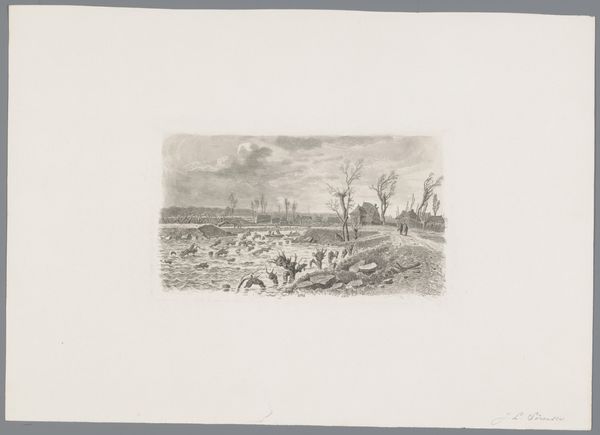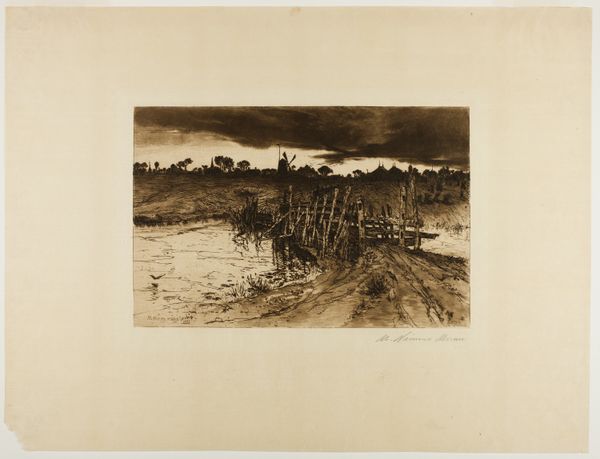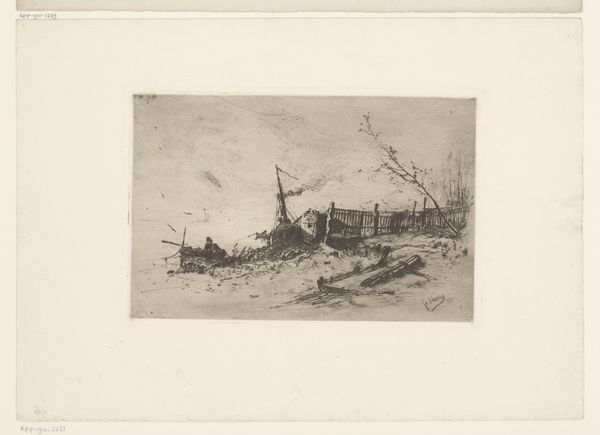
aquatint, graphic-art, print, etching
#
aquatint
#
graphic-art
#
narrative-art
# print
#
etching
#
german-expressionism
#
figuration
#
social-realism
Dimensions: 10 7/8 x 11 13/16 in. (27.62 x 30 cm) (image)11 3/8 x 12 5/8 in. (28.89 x 32.07 cm) (plate)14 11/16 x 18 1/2 in. (37.31 x 46.99 cm) (sheet)18 x 22 in. (45.72 x 55.88 cm) (mat)
Copyright: No Copyright - United States
Kathe Kollwitz created this etching of ‘March of the Weavers,’ and the image is replete with symbols of uprising and collective struggle. The foremost symbol is, of course, the masses marching forward, but pay particular attention to the raised arms and clenched fists. Consider how this gesture echoes through time, from ancient Roman salutes to the clenched fists of revolutionary movements. It's a visceral expression of defiance. The flag held aloft, though dark, serves as a beacon, a rallying point for shared grievance. It reminds one of Delacroix's Liberty Leading the People, doesn’t it? The symbolic density here is a testament to our enduring human need to visualize our deepest emotions and aspirations. These gestures tap into a collective memory, an inherent understanding of struggle and resistance passed down through generations.
Comments
minneapolisinstituteofart over 1 year ago
⋮
In early 1893, Kollwitz attended a private performance of Gerhart Hauptmann's play "The Weavers" in Berlin. The play was based on a historical uprising of Silesian textile workers in 1844, in which a group of workers decide their lot is intolerable and rally at the mansion of their employer. He calls in the military and in the upheaval that results, a stray bullet kills an old man who had opposed the uprising. There is no easy or happy conclusion, and the play ends on this note. By basing her graphic cycle on this infamous story, Kollwitz established herself as an artist concerned with the downtrodden. The six images of this cycle confront the difficult themes of poverty, infant mortality, violent rebellion, and retaliatory slaughter. They were not intended to illustrate the play, but rather to create a parallel and independent visual text so that even those unfamiliar with the play could understand the continual struggle of the worker.
Join the conversation
Join millions of artists and users on Artera today and experience the ultimate creative platform.
